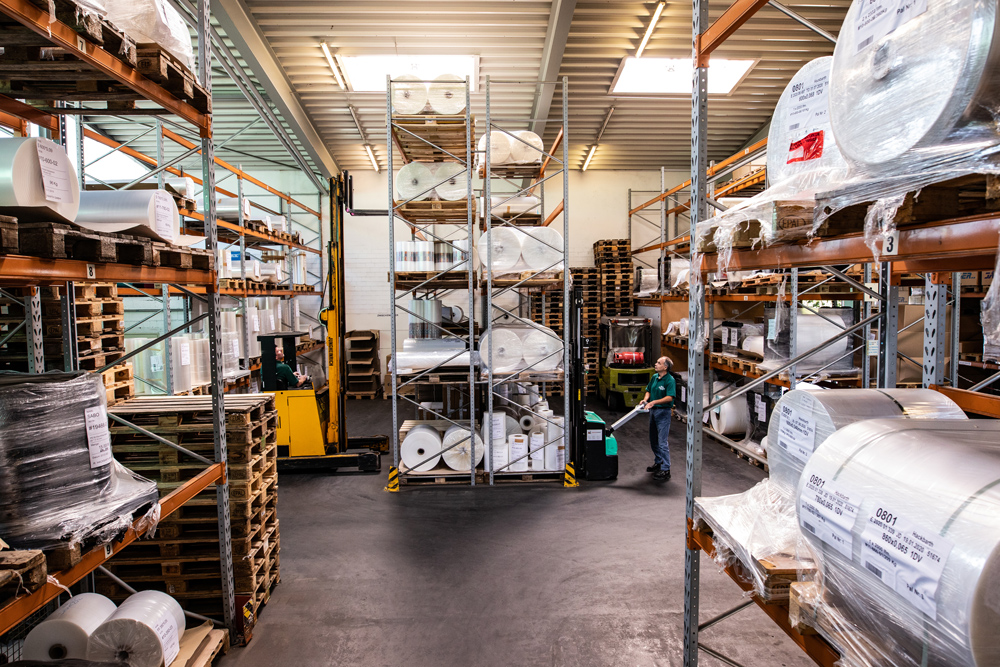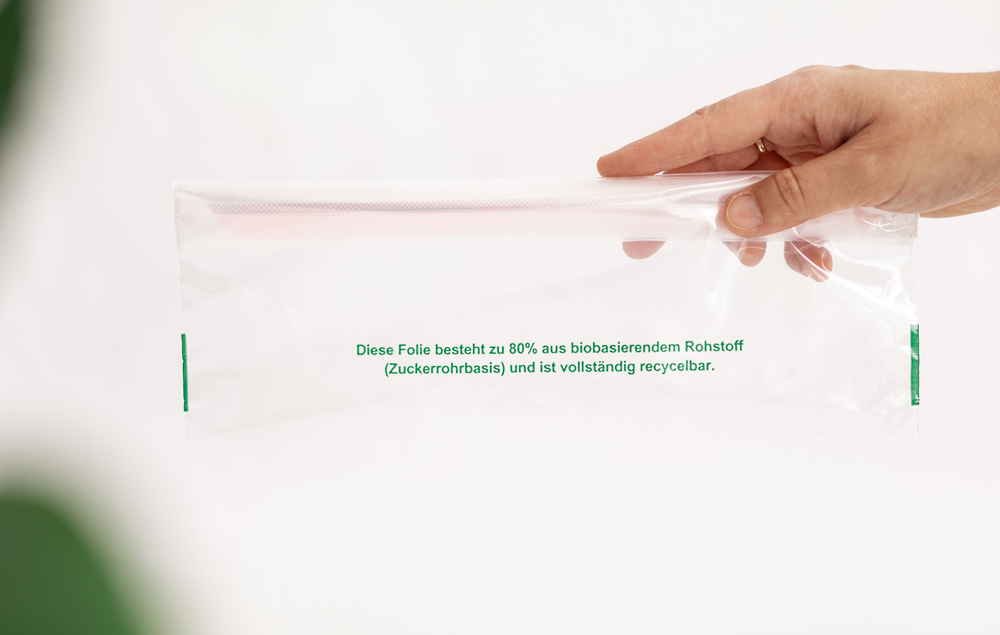Environmentally-friendly packaging
Why do PE and PP packaging make so much sense?
We are aware of our responsibility for sustainable packaging. By using polyethylene and polypropylene films, we have always met the environmental requirements of our customers. We use resources such as energy and materials sparingly and are therefore taking account of factors that are detrimental to the environment. We use bio-based sales packaging and biodegradable foil packaging wherever we can.
Of course we are well aware of the public debate on the subject of plastics and are taking a critical look at this. With all of the arguments against plastic packaging, we are also asking the question: What actually are the benefits? Because there are actually a few good arguments for using film packaging:
- high durability
- resistant to water and chemicals
- easy to work with
- easy to heat seal
- light weight
- saves resource in production and recycling
- can usually be recycled
- neutral to groundwater
- no pollutants during production, processing and disposal – only carbon and hydrogen are produced
- only a few chemicals are needed for production
- low-energy and low-emission production
- low manufacturing costs
- economical to obtain
- less energy consumption and reduced transport costs due to the smaller space required for transportation and storage
- efficient protection against contamination of the contents (background: many products could no longer be sold if contaminated, which would cause economic losses.)
- Prevention of contamination by viruses and bacteria (Note: especially important for packaging in the food industry)
- In some cases foil keeps food fresh longer

Sustainability
Plastic packaging has found its right to exist in the market and in our society – despite all the headlines about “plastic” in nature and the environment.
The production and use of flexible foil packaging make it possible to make use of raw material resources sensibly. They are used to make functional and innovative products. After use, these can be recycled, thermally disposed or composted in an environmentally neutral way.
We should make full use of these possibilities: If we use the available material cycles even more consistently in the future, we will save the available resources and thus noticeably relieve our environment.
Axel Hackbarth, Managing Director

Sustainability
Plastic packaging has found its right to exist in the market and in our society – despite all the headlines about “plastic” in nature and the environment.
The production and use of flexible foil packaging make it possible to make use of raw material resources sensibly. They are used to make functional and innovative products. After use, these can be recycled, thermally disposed or composted in an environmentally neutral way.
We should make full use of these possibilities: If we use the available material cycles even more consistently in the future, we will save the available resources and thus noticeably relieve our environment.
Axel Hackbarth, Managing Director

What do we need to know?
Environmentally-friendly packaging made of foil
Whether it’s glass, paper, metal, fabric or foil – every packaging material has its own individual properties. Foils in particular are light, flexible and cost-effective. From our point of view, the decisive factor is that packaging foils must make sense. Then they have their raison d’être and often cannot be properly replaced by any other material. In addition, packaging foils must be adapted to the relevant product – because foil packaging that has been optimised to a product is economical and environmentally-friendly packaging.
At this point, we would like to do away with the following myth: Foils made of polyethylene and polypropylene do not contain any plasticisers – even if this has been portrayed as such in some media reports in recent months. Plasticisers that are hazardous to our health are a component of other foils, especially of PVC. Our PE and PP foils do not contain any plasticisers.


Where are the differences?
Recycling and compostable packaging
Corporate customers and end consumers are increasingly demanding environmentally-friendly packaging, such as biodegradable plastic foils. There are a few details and distinctions that are important everyone needs to understand. In view of the dwindling oil resources, the use of films definitely makes sense. Even more so, if they can be recycled – such as Green PE. The current state of technology means that films can only be recycled if they consist of one type of film. Laminates consisting of several layers with different types of material cannot be separated yet. After they have been used, they go into thermal recovery to generate energy and heat.
At the same time, biodegradable foil packaging is becoming increasingly important. With this we draw a distinction between two different types of composting: biodegradability according to the standard DIN EN 13432 and home composting. The former means that in industrial composting, at least 90 percent of the environmentally-friendly packaging must be transformed into biomass, CO2 or water within twelve weeks. However, the regular processing time for industrial composting is five to eight weeks. This is why many municipalities in Germany have banned biodegradable plastics from ending up in organic waste. Another hurdle is that this method is not economically attractive because composting foil only leads to a very low yield of biomass. In practice, this means that biodegradable foil packaging is usually incinerated. This thermal recovery releases CO2 and water – very similar to composting.
Home composting of foil packaging is currently experiencing an increasing demand and is undergoing more and more tests. Plastics that can be composted at home and which decompose in nature or in water are still being introduced. We are following this process very closely and are looking forward to seeing the results of this research.


